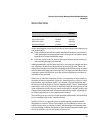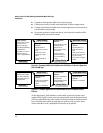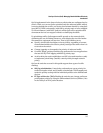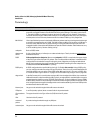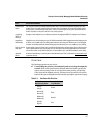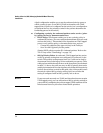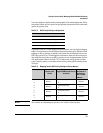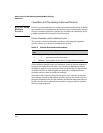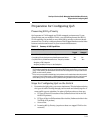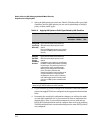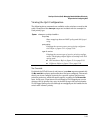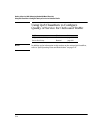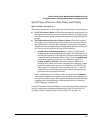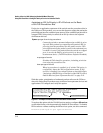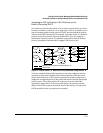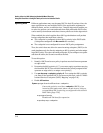
5-11
Quality of Service (QoS): Managing Bandwidth More Effectively
Preparation for Configuring QoS
Preparation for Configuring QoS
Preserving 802.1p Priority
QoS operates in VLAN-tagged and VLAN-untagged environments. If your
network does not use multiple VLANs, you can still implement the 802.1Q
VLAN capability for packets to carry their 802.1p priority to the next down-
stream device. To do so, configure ports as VLAN-tagged members on the links
between switches and routers in your network infrastructure.
Table 5-5. Summary of QoS Capabilities
Steps for Configuring QoS on the Switch
1. Determine the QoS policy you want to implement. This includes analyzing
the types of traffic flowing through your network and identifying one or
more traffic types to prioritize. In order of QoS precedence, these are:
a. IP Type-of-Service Precedence Bits (Leftmost three bits in the ToS
field of IP packets)
b. IP Type-of-Service Differentiated Service bits (Leftmost six bits in the
ToS field of IP packets)
c. Source-Port
d. Incoming 802.1p Priority (requires at least one tagged VLAN on the
network)
Outbound Packet Options Port Membership in VLANs
Tagged Untagged
Control Port Queue Priority for Packet Types Yes Yes
Carry 802.1p Priority Assignment to Next Downstream Device Yes No
Carry DSCP Policy to Downstream Devices. The policy includes: Yes
1
Yes
1
Assigning a ToS Codepoint
Assigning an 802.1p Priority
2
to the Codepoint
1
Except for non-IPv4 packets or packets processed using either the Layer 3 Protocol or QoS
IP-Precedence methods, which do not include the DSCP policy option. Also, to use a service
policy in this manner, the downstream devices must be configured to interpret and use the
DSCP carried in the IP packets.
2
This priority corresponds to the 802.1p priority scheme and is used to determine the packet’s
port queue priority. When used in a VLAN-tagged environment, this priority is also assigned
as the 802.1p priority carried outbound in packets having an 802.1Q field in the header.



